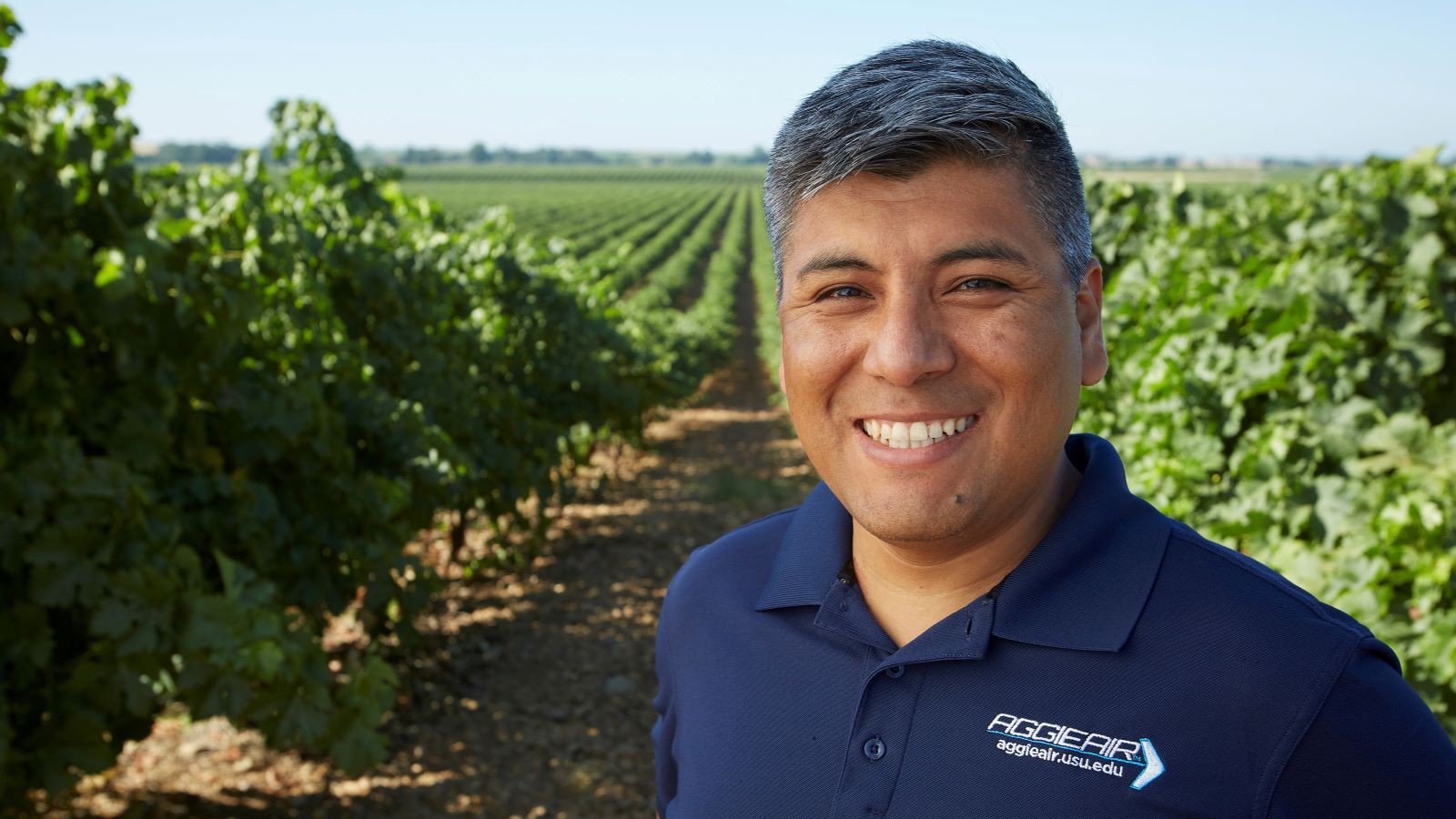USU Researchers Using Drones to Improve Water Management in Almond Production
By Matilyn Mortensen |
Alfonso Torres-Rua
Utah State University researchers are working to make almond production more sustainable by gathering information with drones to improve water management for almond groves and increase almond yield.
Alfonso Torres-Rua, an assistant professor of civil engineering at Utah State, is the leader for a project funded by the Almond Board of California. He said the project’s goal is to estimate the appropriate amount of water use and stress per tree.
“Stress is an important factor in agriculture because adequate levels of stress at the end of the season increases the quality of the almond nuts,” Torres-Rua said.
When it comes to growing produce such as almonds, it’s important to ensure the trees are getting enough water to flower and form fruit, but not so much water that they don’t experience the stress that improves the quality of the nuts. The precise amount of water can vary from tree to tree.
Growers already have the capacity to manage the amount of water different parts of an orchard receive thanks to irrigation technology features, such as zone management and variable rate irrigation, but these features are rarely used because of the lack of detailed information about the orchard.
To ascertain this ideal level of water management, Torres-Rua and his research partners will use drones to scan almond groves and gather data about the trees. The drone technology being used in this research is from Utah State University’s AggieAir project.
From the information they gather, several existing algorithms will be improved to generate information on water status and stress. Growers can use this information to determine the tree’s stress level and how much water they should provide it. In the future, Torres-Rua said the hope is producers could buy or rent automated drones programmed to do this job.
Torres-Rua and his partners have already applied this concept to vineyards under the USDA GRAPEX Project. To adapt the project for almond groves they must work on additional considerations such as the height difference between almond trees and grapevines and the fact that groves of trees have more shadows than vineyards do.
Research for this project began earlier this year and will continue into 2025. In addition to partners from the University of California- Davis Campus, United States Department of Agriculture, and Universidad de Alcalá, Torres-Rua will also be working with Lawrence Hipps from the College of Agriculture and Applied Sciences at USU.
WRITER
Matilyn Mortensen
Public Relations Specialist
College of Engineering
435-797-7512
matilyn.mortensen@usu.edu
CONTACT
Alfonso Torres-Rua
Assistant Professor
Civil Engineering
(435) 797-0397
alfonso.torres@usu.edu
TOPICS
Engineering 337stories Water 260stories Agriculture 225stories Sustainability 145stories Technology 141stories Farming 77stories Drones 14storiesComments and questions regarding this article may be directed to the contact person listed on this page.







